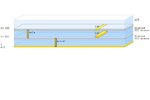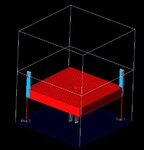mustangyhz
Member level 5
I know how to get the layout of a tranditional front-side on-chip transformer in momentum. But, I don't know how to get the layout of a Silicon-Embedded transformer in momentum, because the fabrication of the transformer is based on some special process including trench formation, thermal oxidation, trench filling, pad formation, backside metal removal and BCB layer formation.

help me!
thanks!

help me!
thanks!



